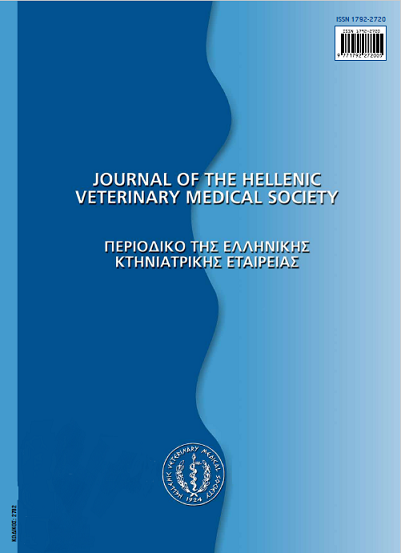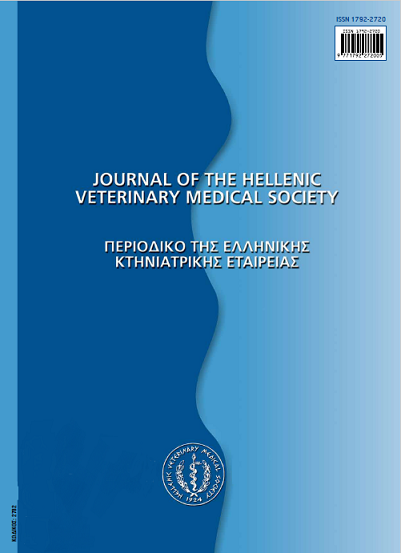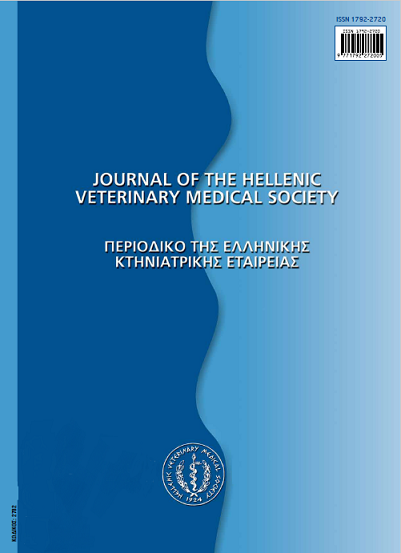Θεραπεία και πρόληψη της διροφιλαρίωσης στο σκύλο: τι καινούργιο γνωρίζουμε;

Περίληψη
Η διροφιλαρίωση είναι συχνό παρασιτικό νόσημα στην Ελλάδα και τις υπόλοιπες Μεσογειακές χώρες. Η άμεση έναρξη ενηλικοκτόνου αγωγής και η μετά από μερικούς μήνες χορήγηση μικροφιλαριοκτόνων ουσιών αποτελούσε μέχρι πρόσφατα το συνήθη τρόπο αντιμετώπισης του νοσήματος. Ωστόσο, νεότερα δεδομένα επισημαίνουν την ανάγκη άμεσης θανάτωσης των μικροφιλαριών, καθώς επίσης και της συμβιωτικής Wolbachia pipientis. Η χορήγηση μακροκυκλικών λακτονών (μιλβεμυκίνη, μοξιδεκτίνη, σελαμεκτίνη, ιβερμεκτίνη) σε δόση πρόληψης επί 2 έως 3 μήνες, ταυτόχρονα με δοξυκυκλίνη κατά τον 1ο μήνα της αγωγής, και, στη συνέχεια, χορήγηση της ενηλικοκτόνου αγωγής, ελαχιστοποιεί το ‘κενό ευαισθησίας’ και παράλληλα την πιθανότητα πνευμονικής θρομβοεμβολής.
Επιπλέον, η εφαρμογή ενός εναλλακτικού πρωτοκόλλου (μία ενδομυϊκή ένεση μελασορμίνης σε δόση 2,5 mg kg-1 σ.β., ακολουθούμενη από δύο χορηγήσεις αυτής με διαφορά 24 ωρών, σε ίδια δόση, μετά από ένα μήνα) είναι αποτελεσματικότερη έναντι του κλασικού πρωτοκόλλου, σε όλους τους σκύλους, ανεξάρτητα από το στάδιο του νοσήματος. Η αντιμετώπιση των σκύλων με διροφιλαρίωση σε προχωρημένο στάδιο (δεξιά καρδιακή ανεπάρκεια ή σύνδρομο οπίσθιας κοίλης φλέβας) βασίζεται κυρίως στην ταυτόχρονη φαρμακευτική αγωγή για την καρδιακή ανεπάρκεια και τη χειρουργική αφαίρεση των ενήλικων σκωλήκων, ενώ ο περιορισμός της κινητικής δραστηριότητας παραμένει το σημαντικότερο μέτρο για τη μείωση της πιθανότητας εκδήλωσης πνευμονικής θρομβοεμβολής. Η εφαρμογή του εναλλακτικού πρωτοκόλλου χορήγησης της μελαρσομίνης, αμέσως μετά τη θεραπεία με μακροκυκλική λακτόνη, μαζί με δοξυκυκλίνη, αυξάνει το θεραπευτικό αποτέλεσμα και βελτιώνει την πρόγνωση στους σκύλους που βρίσκονται σε αρχικό κλινικό στάδιο της νόσου. Η συνεχής προστασία των σκύλων με χορήγηση μακροκυκλικής λακτόνης για όλη τη διάρκεια του έτους, σε συνδυασμό με τον ετήσιο ορολογικό έλεγχο των ζώων, ανεξάρτητα από τη λήψη προληπτικής αγωγής, έχει ιδιαίτερη σημασία για την όλη αντιμετώπιση του νοσήματος.
Λεπτομέρειες άρθρου
- Πώς να δημιουργήσετε Αναφορές
-
SINANIS (Θ.Ν. ΣΙNΑΝΗΣ) T. N., & KOUTINAS (Χ.Κ. ΚΟΥΤΙΝΑΣ) C. K. (2017). Θεραπεία και πρόληψη της διροφιλαρίωσης στο σκύλο: τι καινούργιο γνωρίζουμε;. Περιοδικό της Ελληνικής Κτηνιατρικής Εταιρείας, 64(1), 35–46. https://doi.org/10.12681/jhvms.15477
- Τεύχος
- Τόμ. 64 Αρ. 1 (2013)
- Ενότητα
- Review Articles
Οι συγγραφείς των άρθρων που δημοσιεύονται στο περιοδικό διατηρούν τα δικαιώματα πνευματικής ιδιοκτησίας επί των άρθρων τους, δίνοντας στο περιοδικό το δικαίωμα της πρώτης δημοσίευσης.
Άρθρα που δημοσιεύονται στο περιοδικό διατίθενται με άδεια Creative Commons 4.0 Non Commercial και σύμφωνα με την άδεια μπορούν να χρησιμοποιούνται ελεύθερα, με αναφορά στο/στη συγγραφέα και στην πρώτη δημοσίευση για μη κερδοσκοπικούς σκοπούς.
Οι συγγραφείς μπορούν να καταθέσουν το άρθρο σε ιδρυματικό ή άλλο αποθετήριο ή/και να το δημοσιεύσουν σε άλλη έκδοση, με υποχρεωτική την αναφορά πρώτης δημοσίευσης στο J Hellenic Vet Med Soc
Οι συγγραφείς ενθαρρύνονται να καταθέσουν σε αποθετήριο ή να δημοσιεύσουν την εργασία τους στο διαδίκτυο πριν ή κατά τη διαδικασία υποβολής και αξιολόγησής της.




